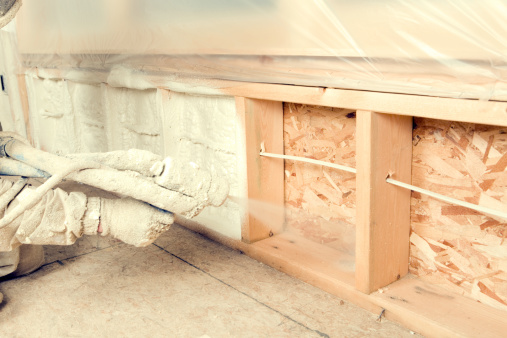DIY Spray Foam Insulation Kit

If you're interested in sealing air leaks and lowering your energy bills, you may want to try do-it-yourself spray foam insulation. However, if you're thinking of doing a major project or need a specialty foam, it might be best to leave the work to professionals.
Homeowners should consider DIY spray foam insulation as a good option for small projects, such as insulating around rim joists or adding insulation to a crawl space. These kinds of DIY jobs often save money over hiring a professional, and the convenience of scheduling your project is an added benefit.
There are several types of spray foam insulation, and you'll find the right type for your project at your local home center or hardware store. Polyurethane is the most common type, but you can also purchase open-cell or closed-cell options.
Closed-cell foams have a higher R-value and are generally more durable than open-cell varieties. The downside is that closed-cell foam is typically more expensive than open-cell versions.
It is important to understand the differences between the two before purchasing DIY spray foam insulation kits. For example, the open-cell variety expands after being sprayed, making it an ideal choice for filling small cracks and voids in the ceiling or drywall.
In addition, open-cell spray foam is affordable and an excellent choice for soundproofing or filling crevices in high places. It's also a good choice for insulating tight spaces, such as around plumbing and electrical wires.
Another option is the flash-and-batt method, which involves installing a layer of spray foam and then finishing with fiberglass batts. This is a popular alternative to using fiberglass insulation, and it's an excellent way to take advantage of the air-sealing properties of spray foam while saving money on your home's heating and cooling costs.
Whether you choose to use foam or fiberglass for your insulation, it's crucial to have the proper personal protective equipment (PPE) on hand when working with spray foam. PPE can include outerwear, gloves, eye and face protection, as well as respiratory masks.
You can use spray foam to insulate a wide range of areas around your home, including the attic, crawl space, and rim joists. You can also use it to insulate exterior walls and around windows, doors, and other openings.
The most important thing to remember when using spray foam is that it should be applied in a well-ventilated area and the air, walls, and foam containers must be below 65 degrees Fahrenheit. If the temperature rises to more than this, it's time to remove the foam from the nozzle and move the air out of the space.
You can purchase spray foam insulation kits online and at your local home center or hardware store. You'll need to determine the total square footage of the space you want to insulate, and then choose a spray foam kit with the appropriate thickness in inches for the job. A general rule of thumb is to install about three inches of foam per 100 square feet of area if using closed-cell spray foam. You can learn more about this topic here: https://en.wikipedia.org/wiki/Spray_foam.